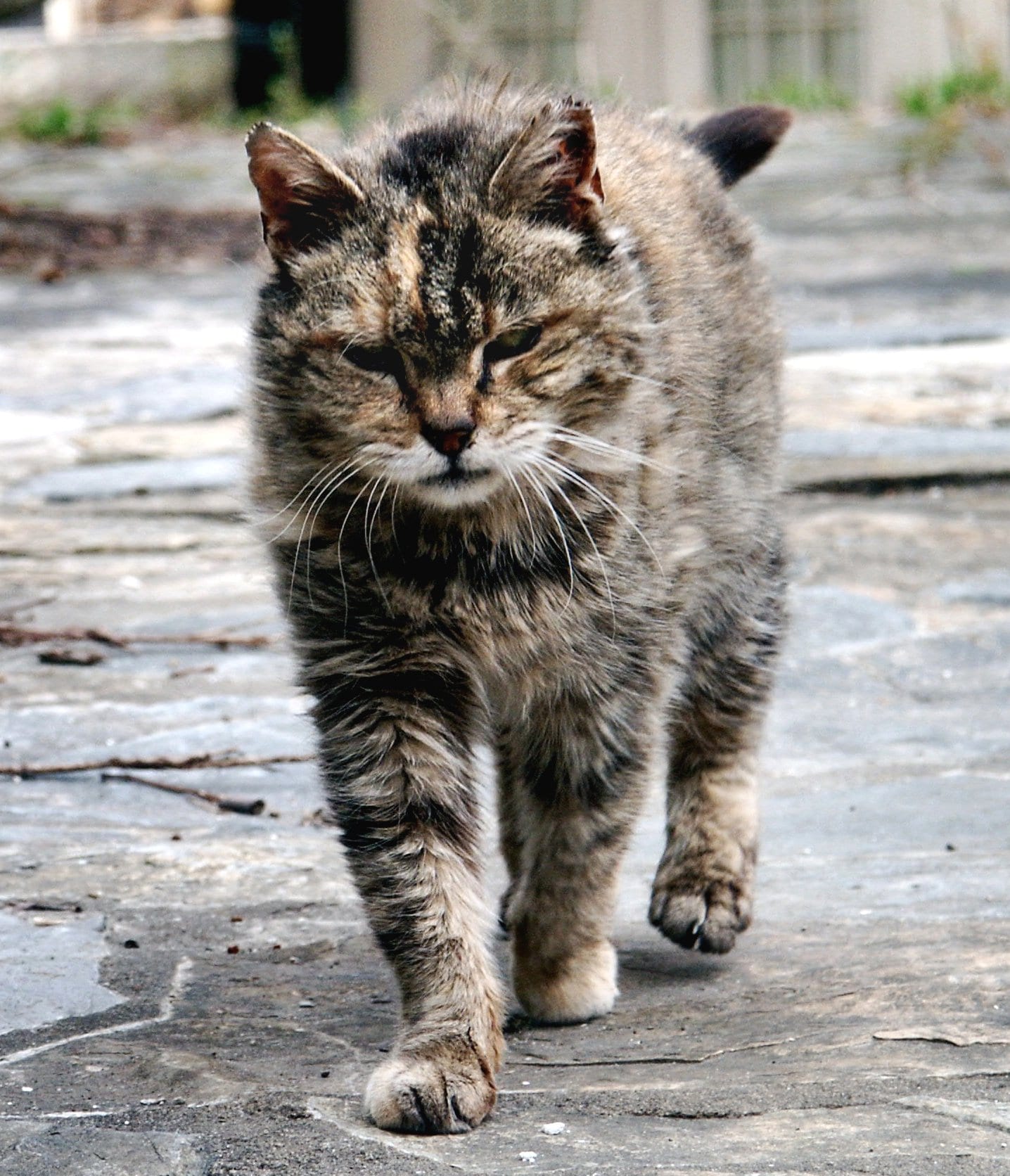


The preference for short salt marsh vegetation during the night could indicate hunting for nocturnal species foraging there, such as hares (Lepus europaeus) and rabbits (Oryctolagus cuniculus). Scat analyses revealed that hares contributed the most to the diet in terms of relative prey volume, but the common vole (Microtus arvalis) was the most numerous prey item. Also, the cats showed a higher nightly displacement, while the daily migration and cumulative daily displacement varied greatly per cat. Habitat use showed that the cats had a small preference for short salt marsh vegetation during the night. Nocturnal home ranges were larger than diurnal home ranges but no differences were found between sexes or age classes. Spatio-temporal analyses show an average 3-month home range of 81 ha for Kernel 95% and 158 ha for MCP 95%. To get more insight into the spatial ecology of this invasive predator, ten feral cats were equipped with GPS tags and followed from May till July 2014. While voles were the main prey, frequent bird remains in the scats still suggest a potential threat for bird populations.Ībstract = "Feral cats (Felus catus) inhabiting the Dutch island of Schiermonnikoog are a potential threat for local prey species populations.

Feral cats (Felus catus) inhabiting the Dutch island of Schiermonnikoog are a potential threat for local prey species populations.


 0 kommentar(er)
0 kommentar(er)
